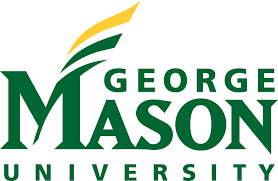George Mason University: Students in forensic figure sculpting class make portraits from the inside out
Joe Mullins loves his job. In fact, he loves it so much that he has been sharing his skills as an adjunct in George Mason University’s School of Art and the Forensic Science Program with the hope of inspiring the next generation of forensic artists.
For more than 22 years, Mullins has worked as a forensic imaging specialist at the National Center for Missing and Exploited Children (NCMEC). For a decade, he has been teaching a Facial Reconstruction class to graduate students in Mason’s Forensic Science Program. This spring semester, for the first time at Mason, he taught a forensic figure sculpting class.
The 15 students in the special topics course started the semester with a generic plastic skull. Week by week, they sculpted different parts of their own faces, creating a portrait of themselves in clay and learning the forensic skills needed to put a face on a skull.
“Basically, it’s a portrait class,” said Mullins, “but you’re doing a self-portrait from the inside out.”
Since 2007, Mullins has been teaching a more comprehensive version of this course at the New York Academy of Art. The difference is the academy students are working on an actual cold case from unidentified remains, which have been analyzed and 3D printed.
“They are active cases,” said Mullins of the New York workshop. “So those students get a sense of the pressure to get it right.”
The Mason course is meant to give interested students a chance to try out forensic art and learn more about facial structures.
“It’s an opportunity for these students to broaden their horizons,” said Mullins, who has a background in fine arts and worked as a graphic designer before discovering forensic art. “One of my teachers [during my undergraduate degree] said, ‘If you’re gonna be an artist, you have to know what’s going on underneath the skin before you can draw or paint what’s on top.”
Mullins calls his class a “crash course on what a skull is telling you.” The students are not just learning to sculpt, some for the first time, they are also getting an introduction to forensic science and anatomy. In addition to teaching the students specifics like tissue depth, Mullins also goes over some case studies with the class, bringing in skulls he has worked on during the course of his career.
“This is hands down the coolest class I have taken at Mason,” said art major Sophia Truxell-Svenson, whose concentration is in drawing. “I was nervous at the start of class because I’m definitely not a sculptor, but Professor Mullins has broken down the whole process into clear steps and is always there if we have questions.”
Truxell-Svenson, a junior, took the class to gain a better understanding of facial proportions and because she has had an interest in forensic art since seeing a Smithsonian Institution exhibit that showed the full process from blank skull to sculpted face.
“It was so cool to see how artists were able to give someone back their face, even hundreds of years later,” she said. “The bones had a story to tell, and the artists were able to bring those stories to life.”
Mason anthropology graduate student Veronica Hughes, who is focusing on bioarchaeology and forensics in her studies, took the class because she is interested in using her education in the forensics field.
“I have really enjoyed the systematic process required in reconstructing a face based on skeletal information,” said Hughes, who has a bachelor’s degree in studio art. “Seeing where applications from science and art join together has helped me to understand how delicate the process is toward producing an accurate reconstruction of a victim that people can identify.”
Hughes said she was also fascinated by what she learned about facial muscle placement and tissue depth in the class.
“On the bioarchaeology side, we mostly are studying skeletal remains to determine the individual’s possible identification in life,” said Hughes. “Realizing how much soft tissue decomposes has been informative and will help me in my work.”
Mullins is offering the class again in the fall and also working on creating additional courses that tackle the topics such as age progression and composite drawing. The long-term goal is developing a graduate certificate in forensic arts. Right now, the only place to get this kind of training is at the University of Dundee in Scotland.
Mullins believes Mason has the perfect combination of resources for such a certificate program with its well-regarded programs in forensic science, anthropology and art, and its partnership with FARO Technologies, an industry leader in high-tech 3D measurement and imaging.
“You have to be a fine artist before you can be a forensic artist,’” said Mullins, “But it is my hope that these artists taking the class might find forensic art a superpower they haven’t used yet or didn’t know they had.”

